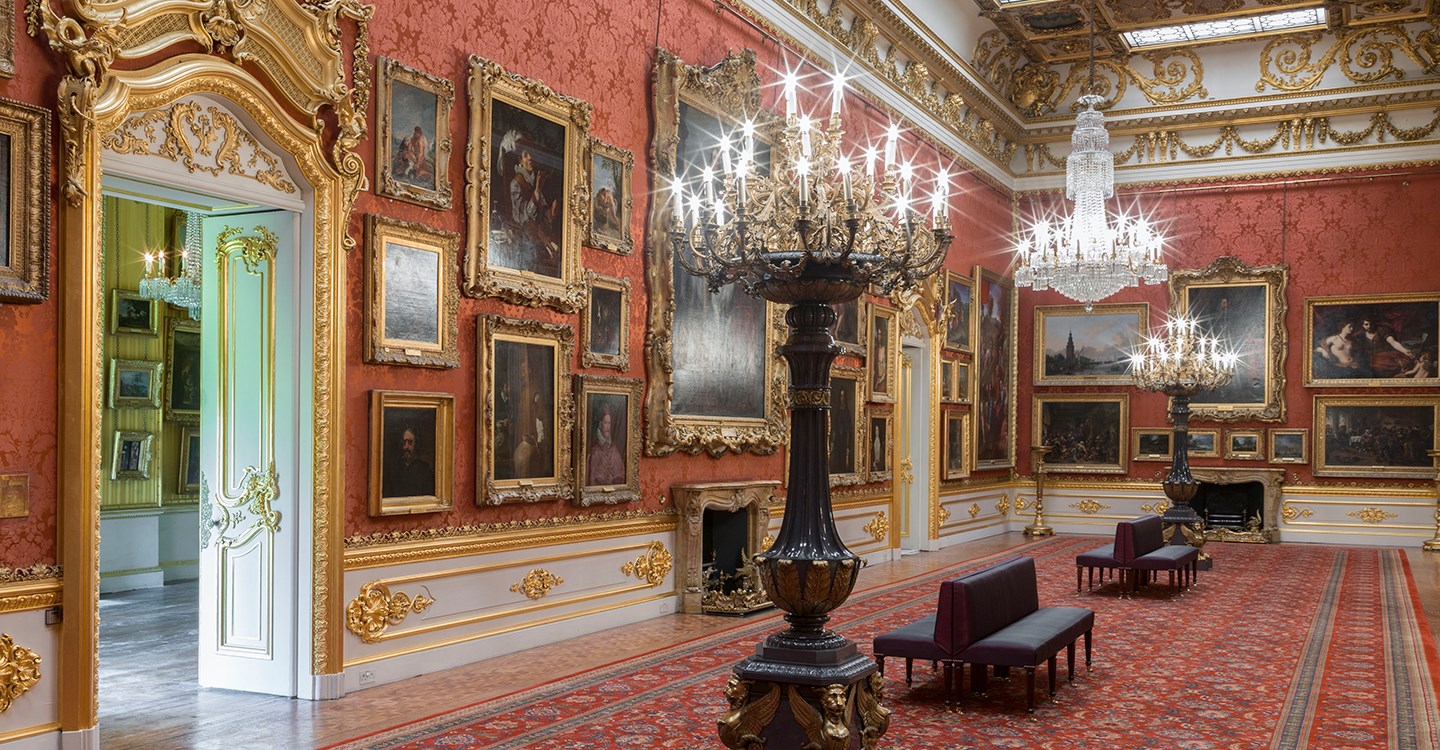CONSERVING ‘Titian’s Mistress’ from Apsley House
Titian’s Mistress, a painting in the collection at Apsley House, was thought to have been painted by a follower of Titian. When the painting came to the conservation studio for treatment in 2012, the its quality was revealed – as well as a hidden secret – and the big question was: could Titian have painted it himself?

Who was Titian?
Titian Vecellio was an influential 16th century artist who ran a large studio with many assistants, including his son Orazio and other Vecellio family members. Later artists, followers of Titian, copied his paintings and imitated his style.
Initial Conservation of ‘Titian’s Mistress’
When Titian’s Mistress came to the studio, conservator Alice Tate-Harte started by cleaning the painting. Untouched since the 1940s, it had accumulated layers of sooty dirt and the varnish had yellowed with age. This made the painting look dark. The dirt layers were dissolved using swabs of saliva and then cleaned away with swabs of de-ionised water. Any flaking paint was fixed with fish glue, using a warm metal spatula to lay the paint down.
Discovering a hidden painting
During the conservation work Titian’s Mistress was X-rayed at the Hamilton Kerr Institute. This revealed a different painting underneath, which came as a surprise since there was no brush texture on the surface to suggest a hidden painting. The X-ray showed that the original painting depicted a seated semi-nude woman raising one hand to pluck a veil in her hair, and an indistinct second face on the right.
Professor Paul Joannides, a Titian expert from the University of Cambridge, recognised that the underlying painting closely matched Venus at Her Toilet from the Courtauld Gallery. Recent investigations have shown that the Courtauld painting is a copy from a now-lost composition by Titian. It is likely that the figure under Titian’s Mistress was a work in progress towards this lost painting of Venus.
A clue to the artist
The X-ray also revealed that the artist or artists made changes to both the upper and lower paintings as they worked. This was normal practice for Titian and his studio assistants – they would develop a composition on the canvas, making significant changes and in some cases re-using canvases. If the painting was a copy made by a follower of Titian, it probably would not show as many changes.
Back in the English Heritage studio, Alice Tate-Harte took tiny paint samples from Titian’s Mistress to look at the layer structure and pigments. These samples revealed that the gesso ground, red underdrawing and pigments were consistent with Titian and his workshop. The artist simply painted out the Venus figure with brown paint and started again with Titian’s Mistress.
Revealing a signature
The aim of the conservation work was to reveal as much of the original paint of Titian’s Mistress as possible. Along with the varnish, overpaint which had been added to the hair, fur and background to cover damage and abrasions was removed. During this cleaning, the letter A emerged beneath the overpaint on the left edge of the painting. It was put under a microscope and, as it was cleaned, more letters emerged. The first part of the signature was damaged where the canvas had previously been folded, but the last letters were clearly visible.
The painted letters were cracked in the same way as the background paint, implying that the signature was added at the same time. This confirmed that Titian’s Mistress was painted either by Titian alone, or by an assistant or assistants from his workshop, or a combination of both. Titian regularly signed his best paintings and would only give the best workshop versions his stamp of approval.
TITIAN OR NOT?
Determining the attribution of this painting is problematic. First, the painting is quite damaged, with the final glazes of transparent paint lost to previous cleaning and lining processes. Secondly, Titian trained his assistants to emulate his technique, so it is difficult to distinguish his work from theirs just by looking at the technique and materials.
Most of the face and body of Titian’s Mistress could have been painted by Titian himself, because they share the same brushwork and stylistic qualities of accepted Titian paintings. There are, however, weaker parts such as the right hand, jewellery and feathered cap, which are more likely to be by an assistant.
These weaker areas make her appear a bit less accomplished than the best paintings by Titian. In his later career, it was not uncommon for Titian to leave areas for his assistants to complete. Even if it is a collaboration between artist and assistant, Titian valued the painting enough to ‘sign-off’, confirming its authenticity to the client who bought the painting.
Many people contributed to the research and discoveries. Thanks to Professor Paul Joannides, Rupert Featherstone, Helen Glanville, Sarah Bayliss, Miguel Falomir, Ana González Mozo and Jeremy Wood.